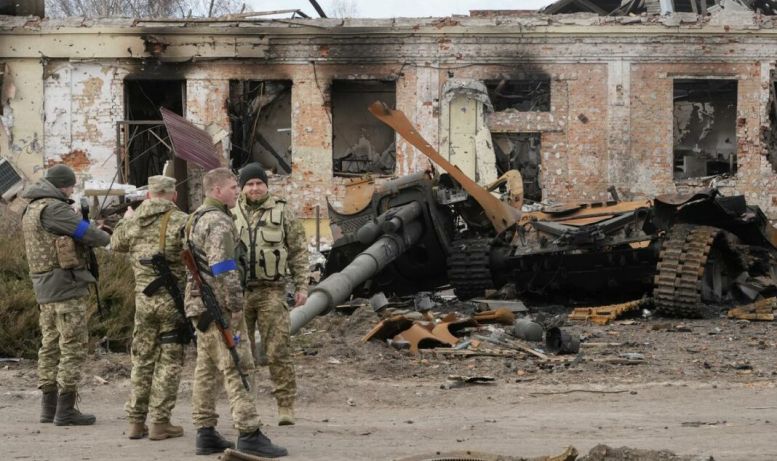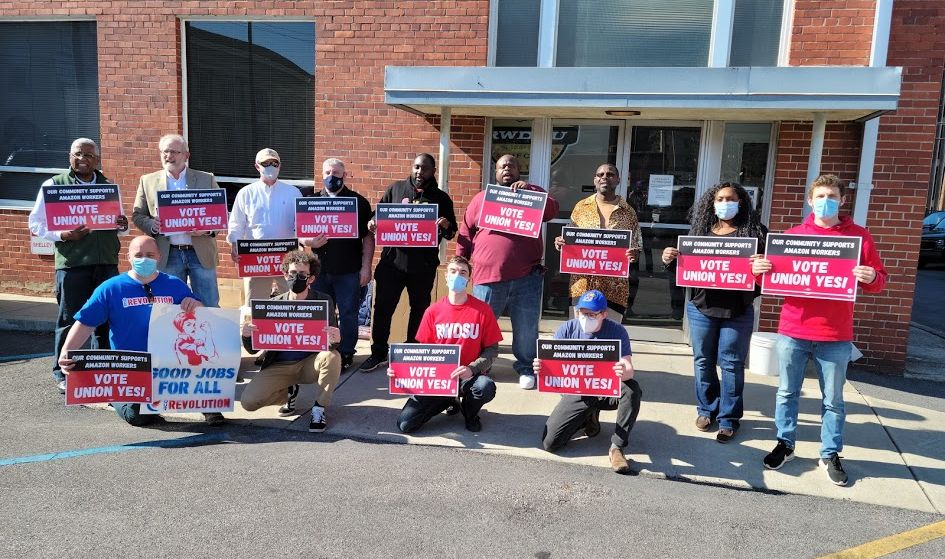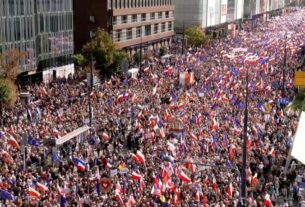Per-Åke Westerlund is a member of Rättvisepartiet Socialisterna (ISA in Sweden).
A Long and Deadly Conflict
It is now six months since Russia invaded Ukraine. With no end in sight, the result today is over 50,000, perhaps 100,000 dead, 14 million displaced, and cities in Ukraine totally destroyed. The whole world has changed, politically and militarily and with major crises of food and energy access, as well as a wider economic crisis.
The biggest overall effect of the war is the sharpening of inter-imperialist antagonisms. The second Cold War, between US imperialism and Chinese imperialism, has been further sharpened by this brutal reminder that “hot” wars and military incidents are firmly on the agenda as the rotting capitalist system enters a perfect storm of crises.
The Western powers are heavily militarizing: EU countries alone have decided to increase military spending by more than 200 billion euro. NATO has decided to multiply its troop presence in Europe sevenfold and has received applications for membership from Sweden and Finland. “Ukraine’s war is ours,” declares Swedish Prime Minister Magdalena Andersson, whose government has followed in the footsteps of other Western powers and sent several rounds of arms.
In Russia, the brutality of the war is matched by increased repression that has forced all opposition underground, into exile or into prison. With numerous and harsh sanctions, the Western powers have, at least in the short term, given Putin the opportunity to portray the war as an attack on all Russians.
The Russian full-scale invasion of Ukraine was preceded by a series of warnings from Western intelligence agencies, but nevertheless sent shock waves around the world when it began on 24 February. Already in April, after 7.5 weeks of war, the Kremlin was forced to give up the attempt to occupy the capital Kyiv and most of the country. Ukraine’s military resistance and the total lack of popular support for Russian troops were decisive.
The Current State of the War
- The Russian offensive in Donbass (Luhansk and Donetsk) has almost stalled after the capture of Severodonetsk and Lysychansk at the beginning of July, which meant that Russian troops took control of the entire Luhansk region. Their advance towards Ukrainian-controlled towns in the Donetsk region — notably Bakhmut and Avdiivka — is now very slow.
- Ukraine has been planning an offensive in the south, in the region and the city of Kherson, for over a month now. Bridges linking Russian troops on both sides of the Dnieper River have been bombed to pieces.
- Heavy explosions took place last week in Russian bases in Crimea. Ukraine’s government has denied that it is behind them, something military experts doubt. Drones and sabotage are probably behind these attacks.
- Bombs have hit buildings at Europe’s largest nuclear power plant, Zaporizhzhya, which is controlled by Russian troops. Both sides have blamed each other.
A Long and Deadly War
With about 200 soldiers dead per day on both sides, the war is already deadlier, and longer, than 75% of all wars since the early 19th century (according to The Correlates of War Project, reported in the Washington Post).
All projections point to a protracted war. Neither side can back down nor even return to the negotiations held in March. Putin launched the war as a kind of “punitive action” but the main short-term goal of Russian troops is now to hold the fifth of Ukraine that has been captured. These regions are to be annexed to Russia via citizenship, the ruble, the internet, the school system, etc., while many reports indicate severe hardship in these areas.
Neither the Western powers nor the Ukrainian government can accept a settlement without Russian concessions. “Western policymakers appear to have reached a consensus about the war in Ukraine: the conflict will settle into a prolonged stalemate, and eventually a weakened Russia will accept a peace agreement that favors the United States and its NATO allies, as well as Ukraine.,” notes an article in US Foreign Affairs.
From providing support to Ukraine to resist the invasion, Biden’s government in particular has stepped up its military support with a view to a military victory for Ukraine. Defensive weapons, such as the Javelin anti-tank missile, are being supplemented by offensive ones. Seven different artillery systems from EU countries have arrived. On 8 August, the largest shipment to date arrived from the United States, carrying ammunition for the advanced Himars rocket artillery system that arrived this summer. So far, the US has sent €25 billion worth of weapons, according to the Kiel Institute for World Economics. The US is also considering sending fighter jets, which have previously been rejected. “Our help is making a real difference on the ground,” commented US Defense Secretary Lloyd Austin. At secret camps in Britain, 10,000 Ukrainian soldiers are being trained, reports Dagens Nyheter.
Ukraine’s government has appealed to Western powers for military support throughout the war. This week, President Zelensky held a summit with UN Secretary-General António Guterres and Turkish President Erdogan. The latter has one foot in each camp following agreements with Putin on expanded trade. Erdogan also took part in negotiations on grain exports from Ukraine. The blockade since the start of the war, together with the impact of climate change, has caused both famine and extreme price rises. The fact that a number of ships have been able to leave the ports does not mean the crisis is over.
Many factors may still influence the war. The fact that the front line is virtually at a standstill despite heavy artillery fire is due to the fact that both sides need to recover. Russian troops have problems with recruitment and morale (ie, confidence in what they are fighting for), while large amounts of destroyed equipment need to be replaced. Ukraine needs to train its troops in new weapon systems and are unaccustomed to offensive combat. There are still great risks of the war escalating, through desperate tactics by either side. Already, warnings of chemical and even nuclear weapons are made by both sides, as well as the use of mines killing civilians.
In Europe, the price of cutting ties to Russian oil and gas could be very high, with an economic crisis and energy shortages this winter. This could increase pressure for a peace deal in Ukraine, risking a split in the Western alliance.
The Ukrainian people have the right to defend themselves against the Russian invasion and decide the future of Ukraine. The way forward is the independent organization of the working class and local communities to form armed defence committees, organizing distribution of supplies etc. There is no solution based on the present war, with the Ukrainian government linked to US and Western imperialism on one side and on the other Russian imperialism.
Any ceasefire or agreement, as has been proven since 2014, will be temporary, building up to new wars. The government under Zelensky is not on the side of workers, with new attacks on trade union rights implemented during the war. There is a need for internationalist appeals to workers and soldiers, stressing the rights of minorities, against governments and a system causing this war.
The absence of a strong labour and peace movement is another important factor that allows the war to continue. In many countries, left-wing parties have capitulated and accepted increased military spending, including arms for Ukraine. But workers and young people cannot support any of the imperialist blocs or governments. It is the contradictions between them, built into the capitalist system, that lead to war. The struggle against war and its devastating effects at all levels is a struggle for real internationalism, the understanding that workers have common interests, and a struggle for democratic socialism against warmongers and dictatorships.




